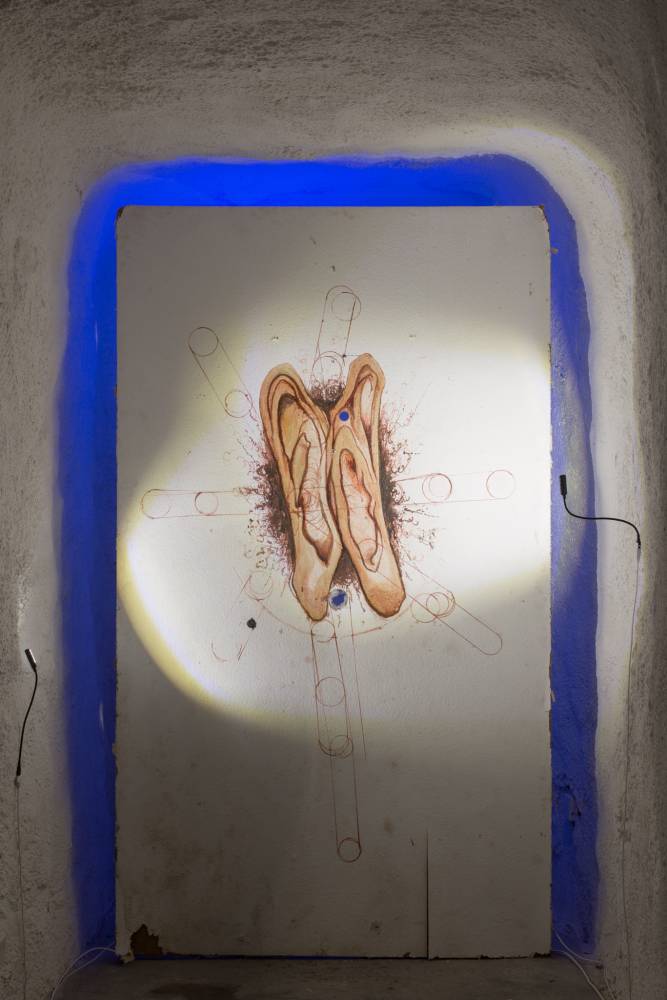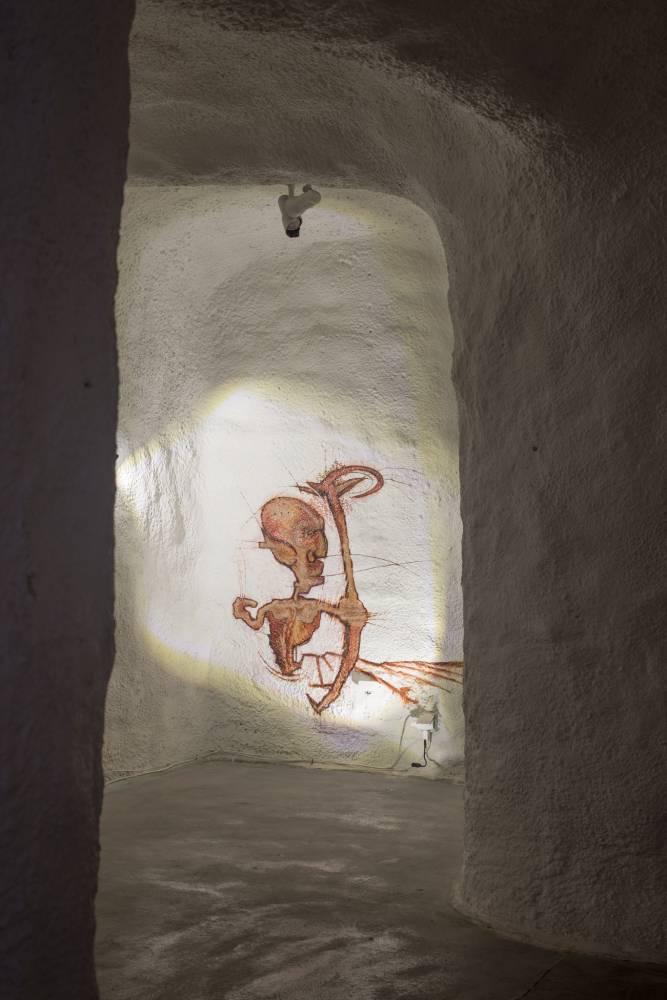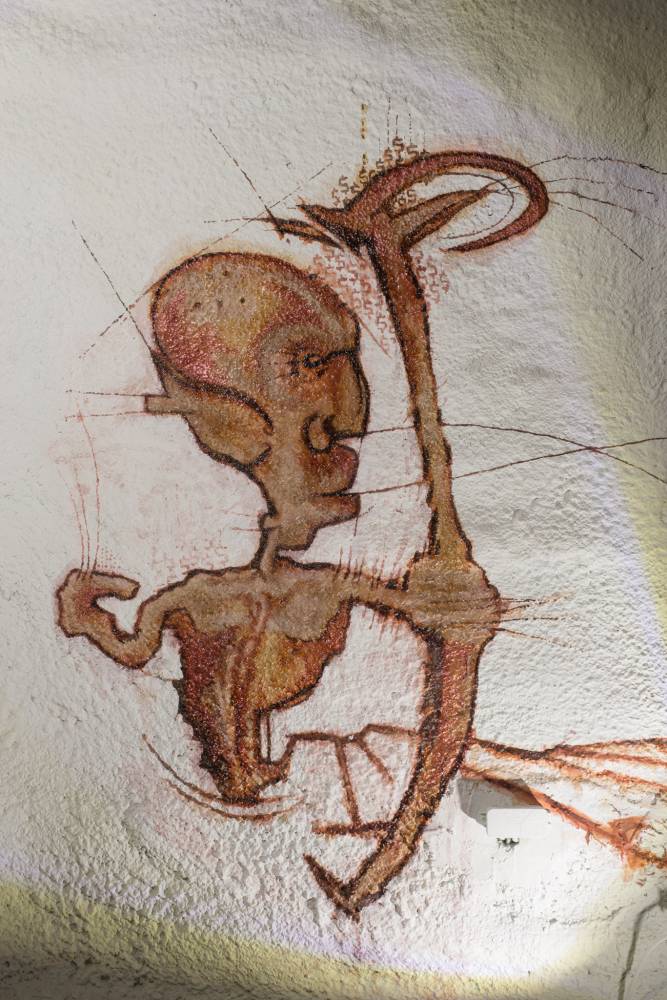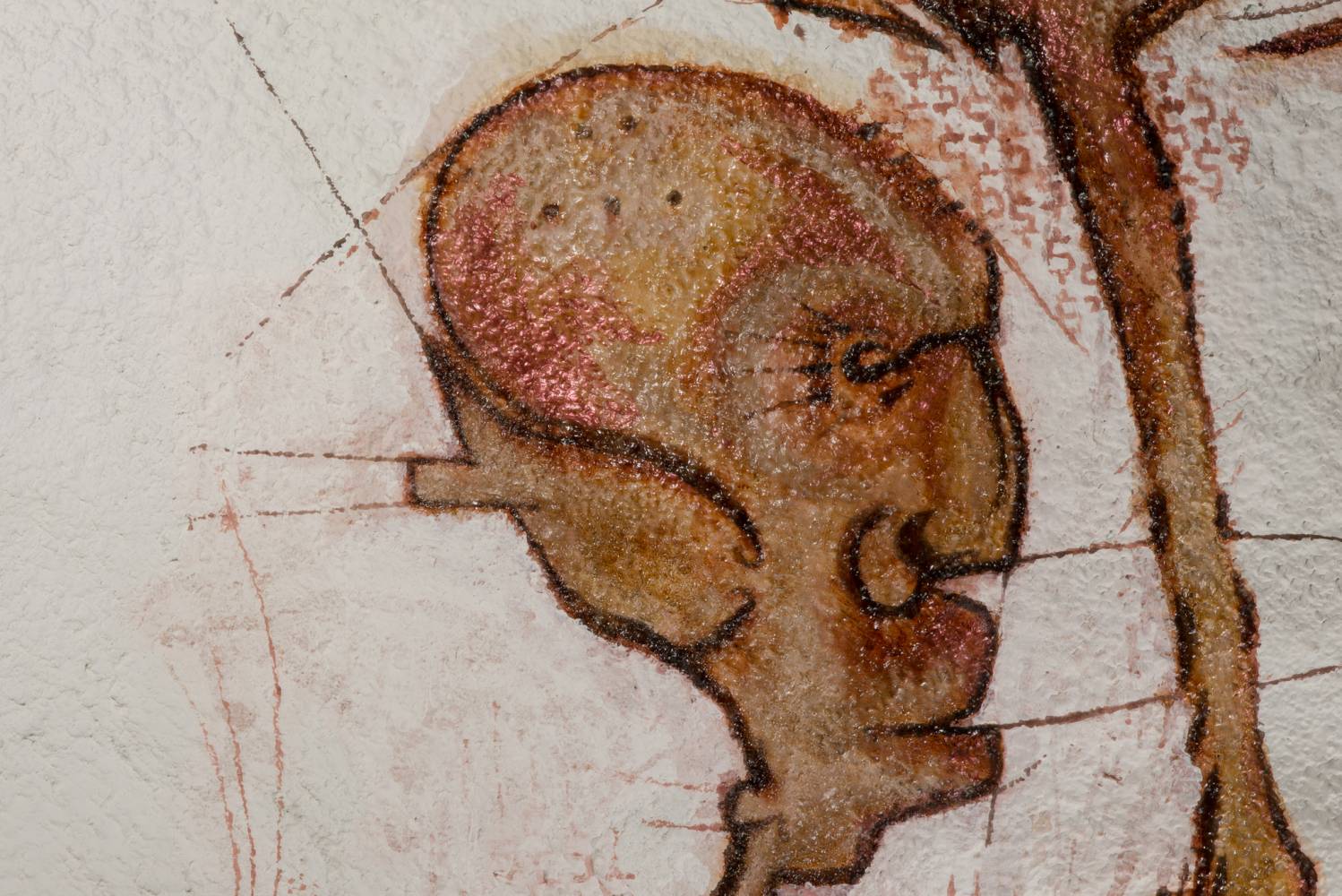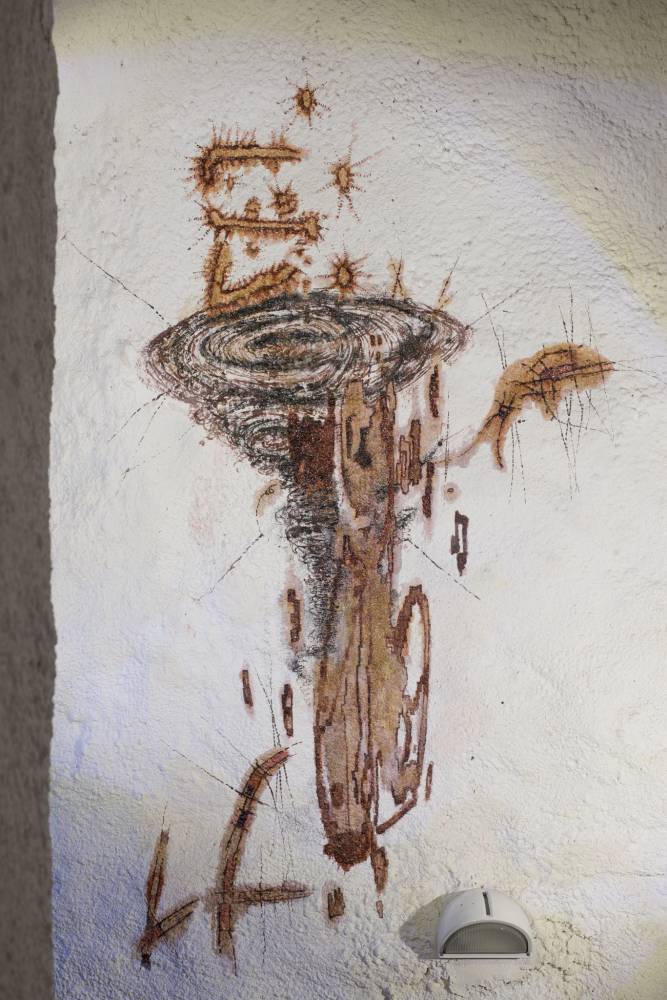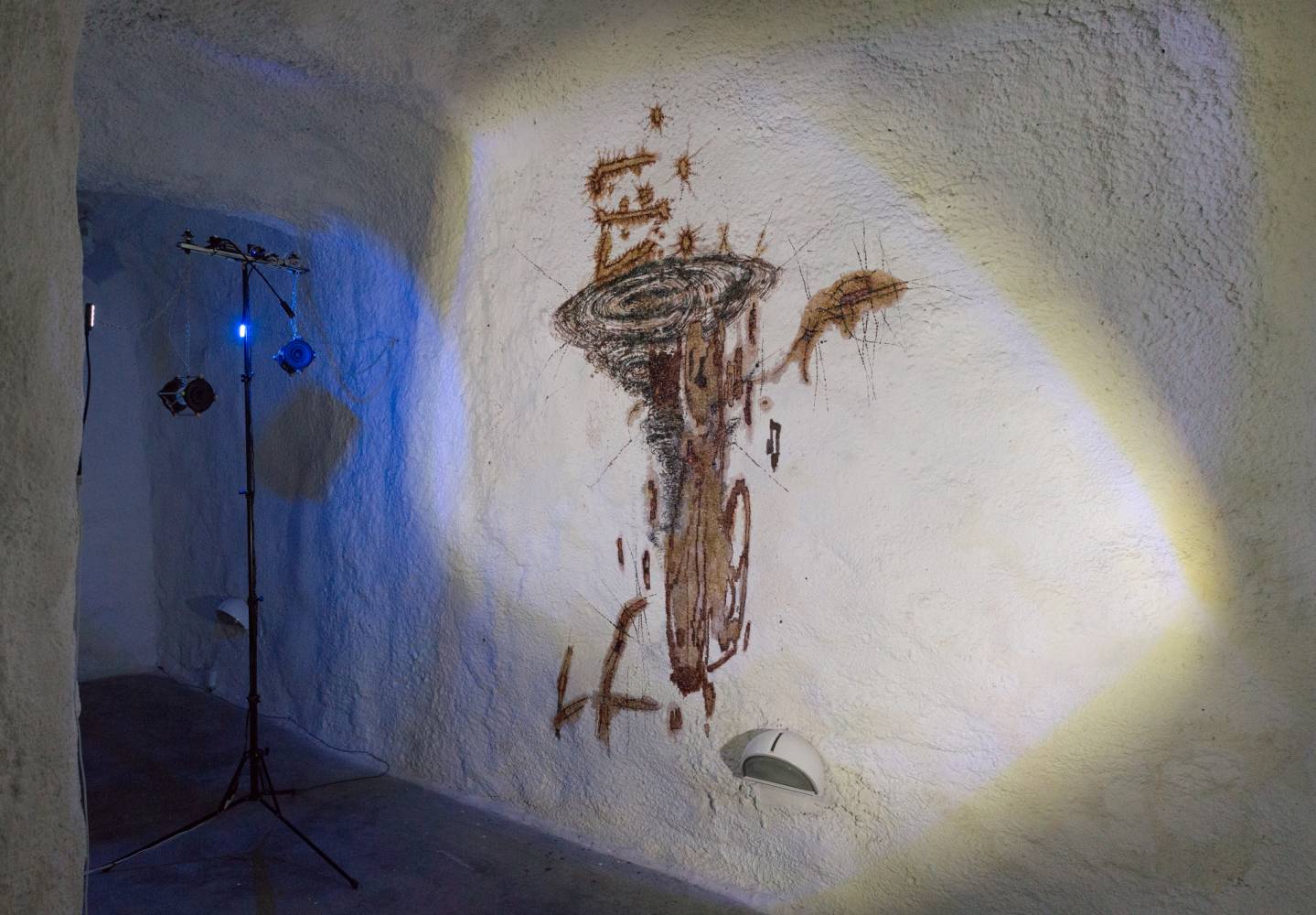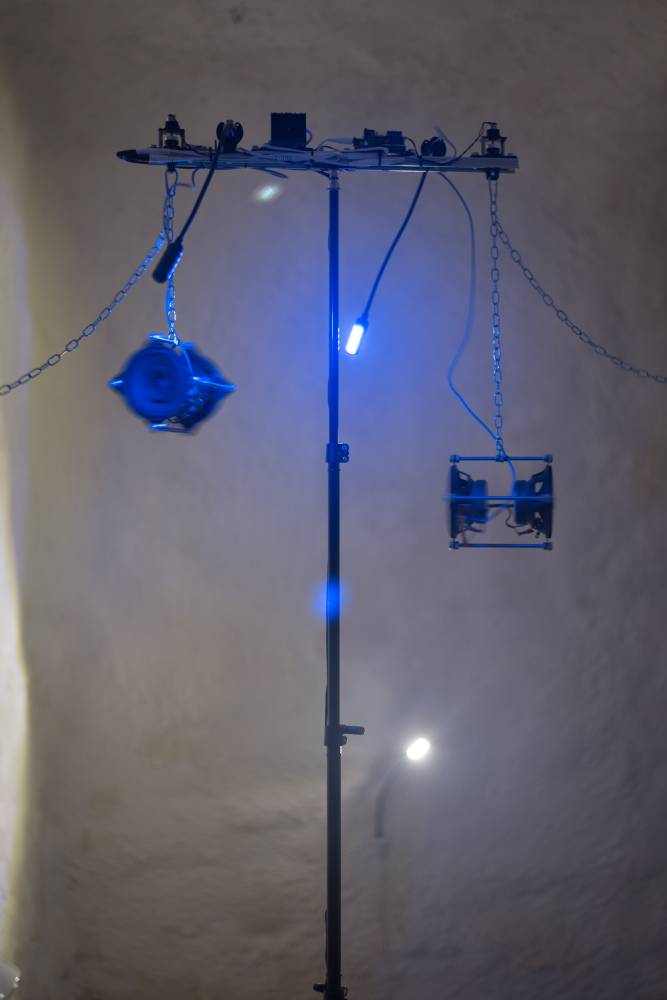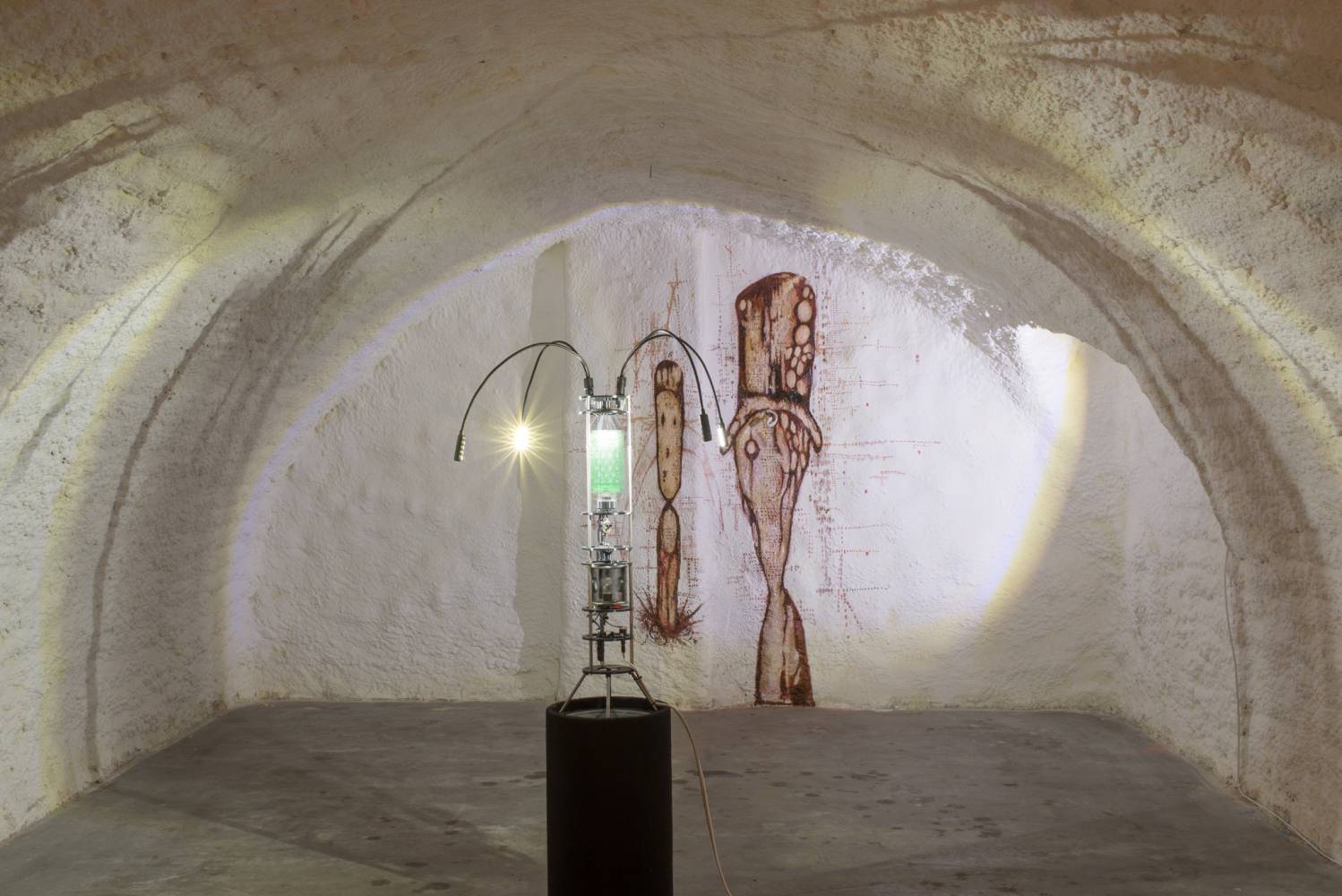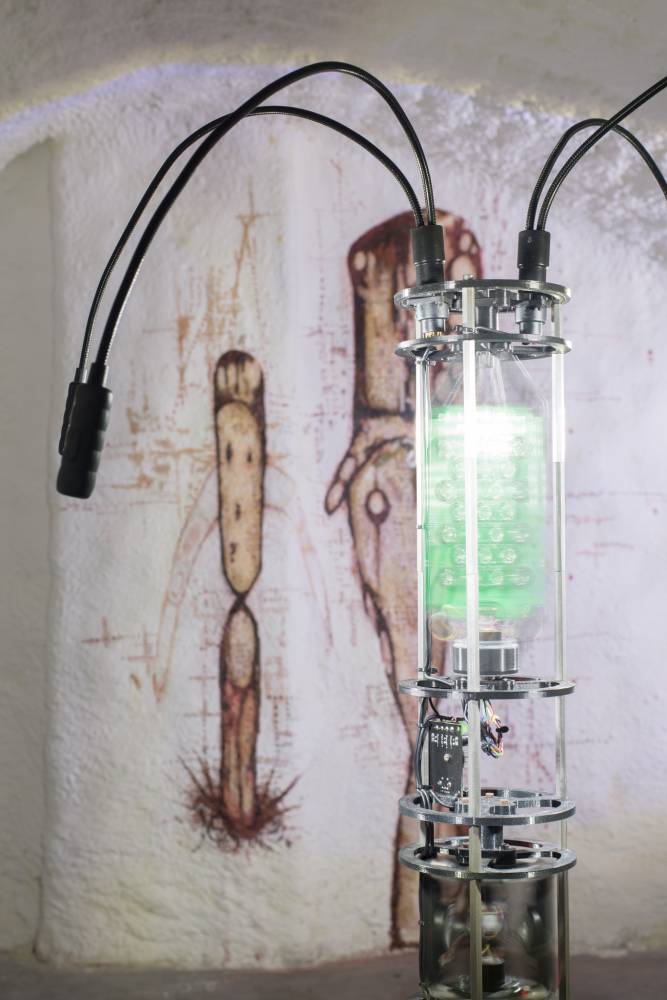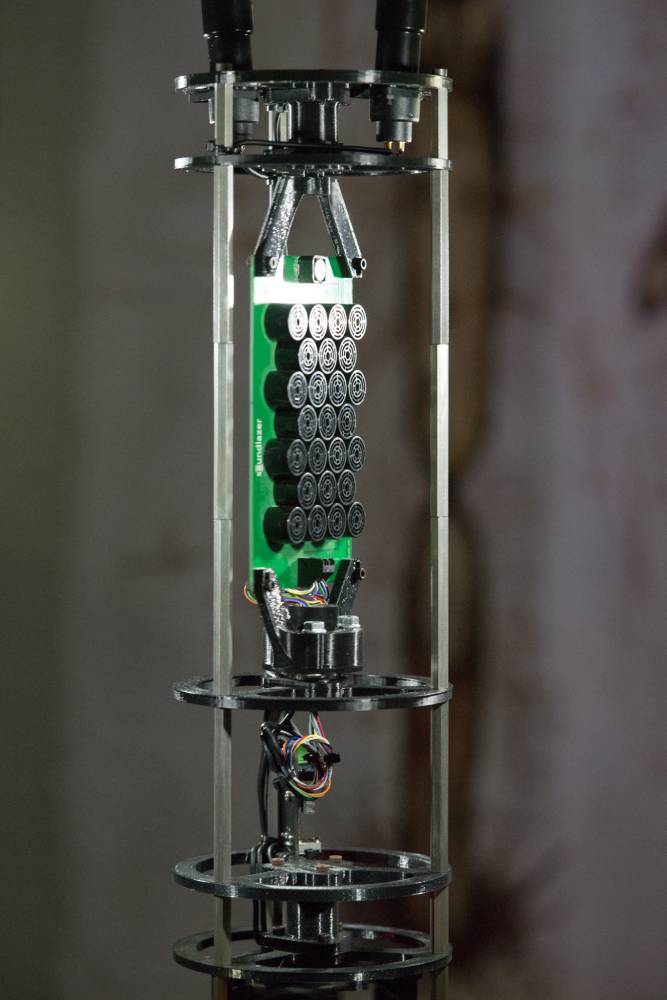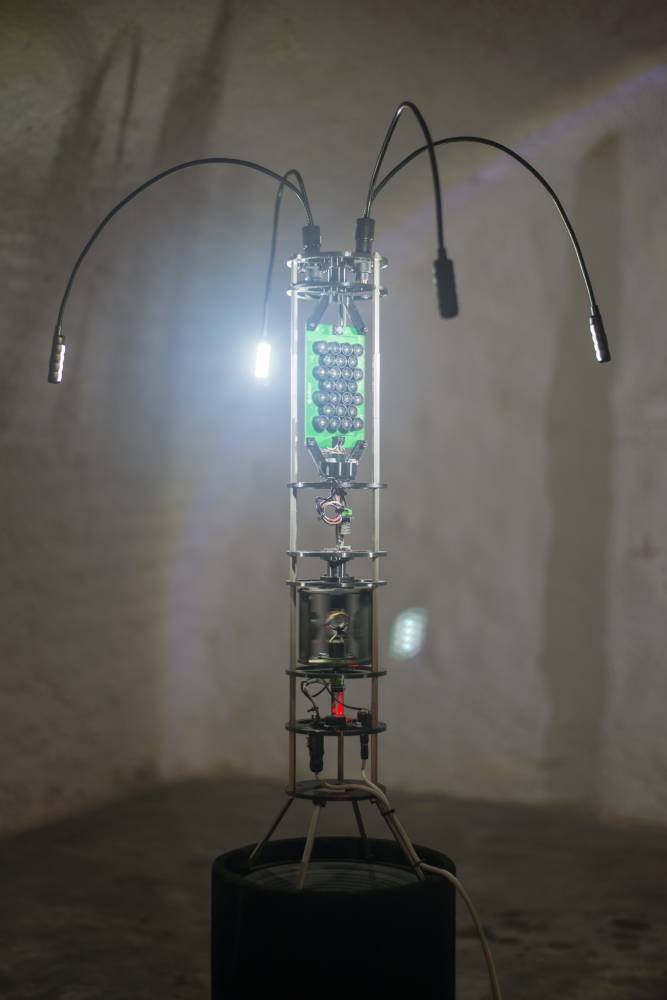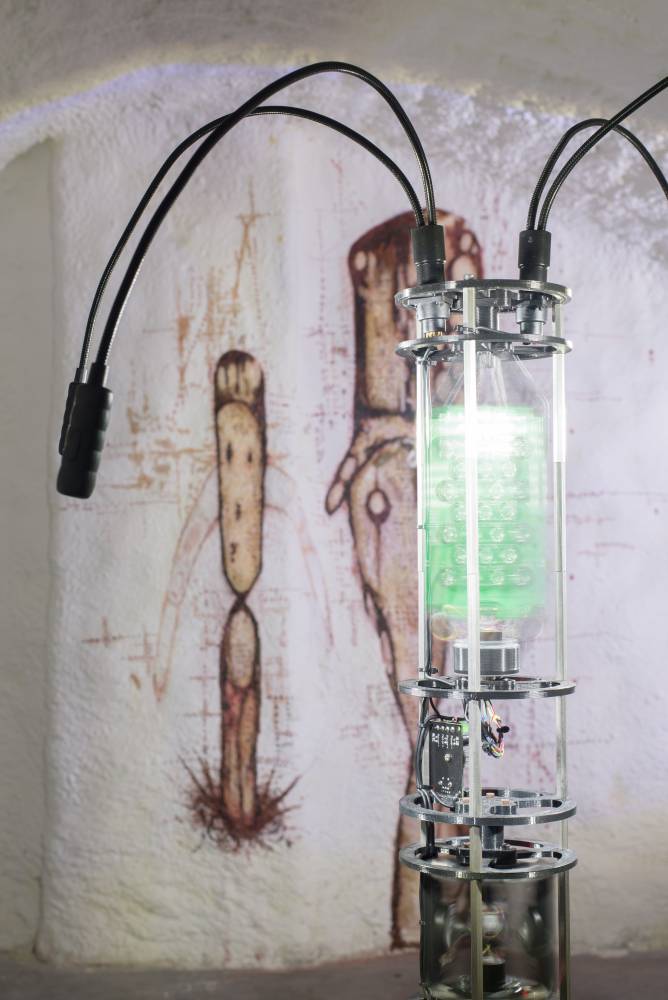The opening will take place on 18/8 at 18:00 in the CED catacombs.
Exhibition block Order of Sonic Chaos I: Preliminary Shrine will be held until 25/8/2022.
The first of the three exhibition blocks of the Order of Sonic Chaos project, called Preliminary Shrine, combines sound objects and visual art into a unique installation in the catacombs. The exhibited ritual sound instruments and objects use the principle of psychoacoustic effects, ultrasound, and controlled rotation. They are based on the artistic practice of the eponymous collective Order of Sonic Chaos, which has used some of these objects in sound ceremonies since 2015. The visual artists František Hanousek and Jakub Hájek were invited to collaborate, and on this occasion, they work with the motifs of parafiction, pain, and resonance of body organs. Sound artist and composer Natálie Pleváková was invited to use the installation as an instrument interface for the concert situation.
Exhibiting artists: Angakok Thoth (SK), František Hanousek (CZ), Jakub Hájek (CZ), Jonáš Gruska (SK)
Accompanying programme:
21/8
4pm guided tour of the Ephemeral Shrine exhibition, free entry
5.30pm performance of Natálie Pleváková
(limited capacity of 15 people, tickets for 100CZK)
7pm performance of Natálie Pleváková
(limited capacity of 15 people, tickets for 100CZK)
&
25/8
7.30pm Order of Sonic Chaos 1: performance
(tickets for 100CZK)
Curatorial text by Jonáš Gruska:
We are not the first to see parallels between a priest, a shaman, and a performer, between a ritual, a rave, and a concert, between sanctuaries, churches, and spaces dedicated to listening to music. After all, even within almost all religions on earth, music and sound are key means of amplifying or establishing altered states of consciousness.
The sound was and still is close to us as a medium in all its forms – from simple short expressions to complex harmonies, sound as a physical phenomenon, or an emotionally charged statement.
Its ability to affect us on an emotional level probably also comes from a direct (not able to be closed by eyelids) connection to the brain - a consequence of the evolutionary role of the ears as warning tools against predators. We can't close our ears, and perhaps that's why sound can often penetrate us somehow "deeper" and evoke stronger emotions than a visual sensation. Archeology shows us that sound and spirituality were closely related phenomena, and dedicated spaces were specifically designed for optimal acoustics.
Bernd Oberhoff's psychoanalytical theory indicates that the relationship between music (sound) and religion is formed already in the womb. The mother's voice, as one of the first sounds during pregnancy, represents a higher, divine entity. This is a kind of prenatal listening. In contrast, there are theories that this strong response to music (in a religious context) is more connected to culture and does not work acousmatically - without context, without knowledge of the phenomenon.
Anyway, we know that music has important neurophysiological effects. When we are talking about rhythmic sounds there is the synchronization of various bio-oscillators – breathing, heartbeat, brain waves, and blood pressure. The group synchronization of these human rhythms results in increased levels of empathy. Soothing music, on the other hand, has been proven to reduce the amounts of the "stress" hormone cortisol. Thousands of so-called ASMR (autonomous sensory meridian response) videos on the Internet use the physiological phenomenon induced by a specific kind of scratchy-whispering sound, and along with drone music and generative soundscapes, are a common remedy for people who have trouble falling asleep in silence.
Art has the opportunity to explore this property of sound more freely than a rigid scientific procedure. It empirically tests what works on self and listeners/viewers, even if it may not yet know why. The group with an eponymous name as the presented three-part project — Order of Sonic Chaos — was created in 2015 as a discussion on the topic of connecting the religious perception of the world with sound. It is precisely that artistic-research phenomenon that relies on science as much as on simple empirical experience. "Sound appeared to us as a support structure, which, unlike language, did not distort communication."
Since 2015, OOSCH has performed several ceremonies in various locations in Slovakia, the Czech Republic, and Austria. The core of their practice were mostly simple (psycho)acoustic phenomena, the power of sound in the purest possible forms. In their first-ever Ephemeral Shrine exhibition, they create an environment consisting of various sonic objects working on the principles of sound in motion, acoustic interaction, and ultrasound.
The following exhibitions from the guest groups MSHR and EJTECH are based on similar concepts. By creating their own, often alien-looking aesthetic language, they present new audiovisual environments reminiscent of shrine decorations. The space of the catacombs is gradually transformed into temporary temples with sound as a sacred instrument. Research continues.
Bibliography:
Alcorta, C. S., & Sosis, R. (2005). Ritual, emotion, and sacred symbols: The evolution of religion as an adaptive complex. Human Nature, 16(4)
Demmrich, S. (2020). Music as a trigger of religious experience: What role does culture play? Psychology of Music, 48(1), 35–49.
Jackson, A. (1968). Sound and Ritual. Man, 3(2), 293.
Morley, I. (n.d.). Ritual and Music: Parallels and Practice, and the Palaeolithic. 19.
BIO of the artists involved:
Jakub Hájek, František Hanousek
artviewer.org/jakub-hajek-frantisek-hanousek-at-holesovicka-sachta
Visual artist duo working with a wide array of tools of expression in a range of nondigital materials, with a mixture of various components which, in their rendition, weave together and hybridize ad absurdum. Their practice lies in the methodical parody of technology, reflexive child’s play, museological parafiction, material event as an injection of their personal history. They have taken part in residencies at C. Rockefeller Center for Contemporary Arts in Dresden, at FSC in Copenhagen, at the Dálava road-space in Prague, and at the 42nd MMS in Moravany nad Váhom. As part of collective exhibitions, they were included in the Wasting Around show: Tradition in Verses at the Bistro 21 Gallery in Leipzig; their work has also been on display in other galleries, e.g., Futura, A.M. 180, Meetfactory, Výstavní síň Hrob, or with PGS Collective and Essenza Club.
Jonáš Gruska (SK)
jonasgru.sk
Jonáš Gruska studied at the Institute of Sonology in The Hague and at the Academy of Music in Kraków. Since 2009, he has been involved in field recordings and experimental music with a focus on chaotic and polymetric generative compositions, unconventional tuning, and research of the psychoacoustic attributes of spaces. He has created a number of site-specific sound installations utilizing the resonance properties of spaces and objects. As a lecturer, he has led workshops on sonification, field recordings, electromagnetic listening, and programming for artists.
In 2010, he founded LOM – an experimental music label and a brand of nontraditional instruments and microphones. Since 2013, he has organized ZVUK, an outdoor micro-festival in abandoned spaces around Bratislava. In 2018, he opened LOM SPACE, with a community library and rental of recording equipment. In 2019, he founded bioLOM, a platform focused on mycology, lichenology, fermented food, and edible seaweed. As part of bioLOM, he opened a laboratory devoted to the cultivation of mushrooms, their mapping, and DIY scientific research. The mykoLOM festival was created as part of bioLOM’s activities.
Angakok Thoth
www.soundcloud.com/angakokthoth
Experimental musician (Poo, Angakkut, Amen Tma), hardware/software musical instrument engineer and one of the founders of LOM publishing. He has worked in the background for the last six years doing spectral geometry.
Natálie Pleváková
test.natalieplevakova.cz/
Music composer and sound artist living and working in Prague. In 2018, she finished her studies of Multimedia composition at JAMU in Brno; a year before that, she graduated from Masaryk University (Department of Musicology) with her work mapping education of electronic music in the Czech Republic. Her work focuses on the exploration of the sound narrative as a compositional strategy of electronic music in a post-digital context. She creates autonomous compositions with multimedia overlaps; her other focus is theatre and audiovisual work.

